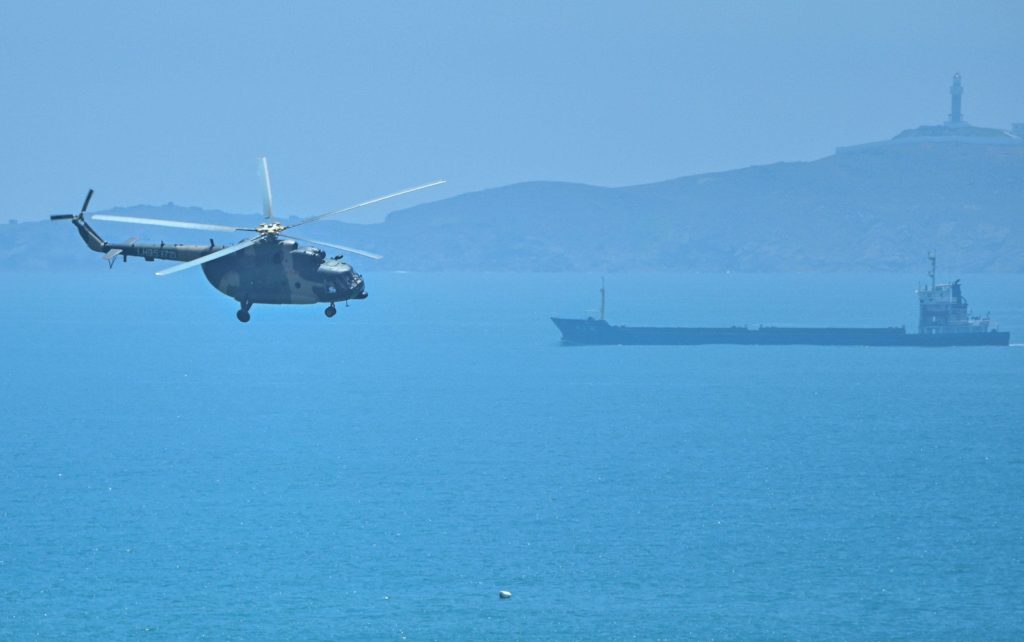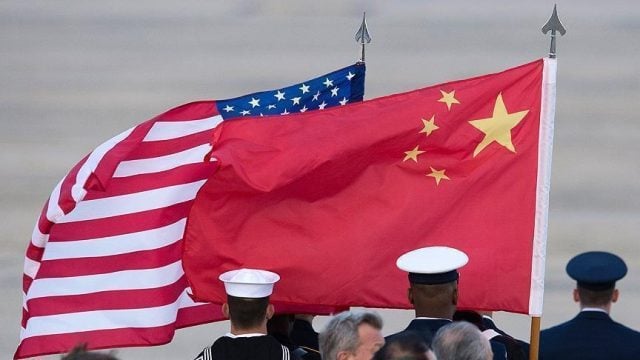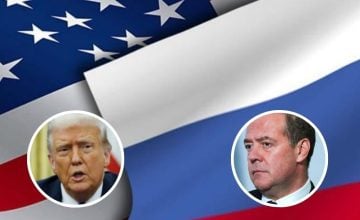Photo: Anadolu
By Maria Sanhueza
In times of global crisis, such us the climate, economic, migratory, energy, sanitary and political crIses, we would expect that the international community would work harder than ever before in a concerted effort to fight against these planetary problems, which threaten the existence of life on earth. Unfortunately, major political and military confrontations among the superpowers are increasing in these times, threatening not only world peace, but the overall chance for humanity to deal with these global issues with the urgency that they require.
The war in Ukraine was a strong wakeup call that undermined our understanding of the equilibrium achieved after the end of the Cold War, which was revealed as being much weaker than we thought. Moreover, that it relied on certain principles, such as the hegemony of the USA and the worldwide expansion of the economic system (the free market) and the international institutions endorsed by them, which have been threatened not just by political confrontations, but also by the above mentioned world crises.
Nevertheless, since the fall of the Soviet Union and the rise of the USA as the largest player in geopolitics, a lot has changed. Other powers, like Japan (back in the 90s), India, Russia, and China have increased (or reclaimed) their relevance, their share in the international market and perception of the role that they should play in the international community, questioning the unilateral exertion of power by the USA and their place as a hegemonic power.
In the case of China (the same goes for Russia, although compared to China they are a minor actor), who has become the second largest power on Earth, there has been an open opposition to the role of the USA as the leading world power and especially to the role they play in the South Pacific area, where China tries to position itself as the predominant player by questioning and challenging the USA economic and military presence they secured at the end of WWII.
This confrontation can clearly be seen in the fight for control over the island of Taiwan, the place where these two superpowers are fighting to secure their supremacy in the region and where the conflict is most likely to escalate, and in the worst-case scenario become a direct military confrontation. A scenario that has unfortunately been corroborated after Congresswoman Nancy Pelosi’s visit to the island, which has detonated a new crisis in the region, threatening the preservation of the status quo as know it in the region and, in case of a further escalation into direct confrontation between these two SUPERpowers, world peace.
In order to analyze this crisis, its differences with previous ones and its possible consequences to the international status quo, we have talked with renowned historian, scholar, and China specialist Professor Dr. Susanne Weigelin-Schwiedrzik.
M.S. The western and the Chinese media have tried to present the goal of Pelosi´s visit to the island in a completely different manner, a lot has been said regarding the talk between Xi Jiping and Joe Biden, is there any further information released on the aftermath of her visit? How do you analyze the intention behind her visit?
S.W.S. In hindsight, we know that Joe Biden reportedly advised against that visit, citing his military officials, and that Biden and Xi Jinping also discussed it during their telephone conversation on July 28, 2022.
Although Xi Jinping is said to have threatened at the time, as the media reported, that whoever lit the fire, would perish in it, hardly anyone in Europe was interested in that. Only the «military exercise» designed as a Blockade by all parts of the so-called People’s Liberation Army have made it clear to Europe that the US is not only fighting in Europe, but also in East Asia for its supremacy and apparently does not shy away from leading this fight on both fronts at the same time. Even though Nancy Pelosi dedicated her visit to the defense of democracy in Taiwan and in her public statements while she was there, represented herself as a heroine in the fight against authoritarianism in the People’s Republic of China, the visit served to stake out geopolitical positions and not only to challenge the opponent on site – the PRC. It also targeted the friends and allies in the Indo-Pacific and Europe and demanded their loyalty.
While Biden’s recent visit to the region had, at times, sparked speculation that he was planning to expand NATO into East Asia, Nancy Pelosi’s visit to Taiwan showed that the Strategists in the White House do not, in fact, shy away from risking conflicts with both challengers and rivals – Russia and the PRC – at the same time. From a European point of view this is the most important signal sent out to the world by the 4th Taiwan Crisis. East Asia’s long-prepared PLA maneuvers made it clear that China is just waiting for the opportunity to show the world that it dominates the region and has all the means to escalate as far as the CCP sees fit. The new normal in the Taiwan Strait is defined by none other than the CCP Politburo. Taiwan will learn to live with this new normal, just as it has learned to live with ambiguity and risk for decades, but the new normal is far more threatening than the old one. In exchange, the island has finally won the attention it should have gotten long ago.
There have been significant statements and shifts made by the different parties involved in order to redefine the dynamic and configuration of their relationships. A major issue was the discussion about a new Taiwan Policy Act in the USA Senate, how is this relevant to the current crisis?
Nancy Pelosi’s visit came at a time when the Senate actually should have been discussing and passing the new Taiwan Policy Act (2022). The decision-making was adjourned, allegedly because higher priority was given to the confirmation of Sweden and Finland’s entry into NATO. The draft of the Taiwan Policy Act was presented to Congress on June 16, 2022 and forwarded to the Committee on Foreign Relations for discussion. The US legislative initiative on Taiwan Policy not only calls for US$4.5 billion in financial support of Taiwan’s arms purchases, but also refers to Taiwan as a «major non-NATO ally». The Legislative initiative requires Washington’s government to oppose travel bans on official representatives of the US government to Taiwan and, while maintaining the previous agreement with the People’s Republic of China, to allow the name «Taiwan Representative Office» to designate Taiwan’s representation in the USA in the future. The Director of the America Institute in Taipei is to be seen as a «representative» of the USA in the future.
M.S. Which major statements or shifts can we observe from the side of the People´s Republic of China or Taiwan?
S.W.S. On the day of the conclusion of the PLA’s «military exercises» in Beijing, the White Paper on the Taiwan question was published, according to informed circles, it had been completed months in advance and had been waiting for a publicly effective publication date. In this “White Paper on the Taiwan Question and the Importance of Unifying the Motherland in the new epoch» it is said that: «We are closer than in any previous historical window to our goal of uniting the motherland, and have more confidence and capacity to achieve that goal”. In contrast to previous comparable publications, which had always underlined that no soldiers would be sent to the island, this self-commitment can no longer be found in the newer text. On the contrary, there is the wording that the deployment of soldiers is intended as a last resort «to retrieve» Taiwan. “Should we be in a situation where no other option opens up, we will use weapons as a last resort. In response to provocations by the separatists and external forces, we are forced to take strict measures if they cross our red line.” Also the self-commitment, to not send officials to Taiwan to govern the «province» does not appear as it did in the White Papers published in 1993 and 2000.
The formula «one country – two systems» originally devised by Beijing for Hong Kong and Taiwan – is thus obviously become obsolete on both sides of the Taiwan Strait. However, the phrase is repeated «The peaceful union with Taiwan and the adherence to ‘one country two systems’ is the basic political guideline» for the solution of the Taiwan question. Indirectly, the reason indicated for the Policy change is that forces coming from outside the region fueled the Taiwan independence movement. We are familiar with this formulation from the context of the protest movements in Hong Kong, where it was also justified that Beijing’s tightened action on site was due to foreign influence. In general, it is noticeable that the official media in the People’s Republic of China have expressed sharp criticism mainly of the Taiwan Independence Movement, or Taidu for short, and on current President Tsai Ing-wen. She is accused of having prepared Pelosi’s visit well in advance via Taiwan’s representative in Washington Bi-khim Hsiao, a close confidant of the President with family ties to the United States. Since taking office in 2016, President Tsai has always behaved very prudently, despite her well-known commitment to Taiwan’s independence. She also has refrained from making public remarks about Nancy Pelosi’s visit and did not appear with Pelosi at the official press conference.
However Tsai has repeatedly made it clear that she sees Taiwan closely aligned to the US and, in close coordination with the US, is trying to increase Taiwan’s room for maneuver step by step. In her speech on the occasion of the national holiday on October 10, 2021, she explained that although she hopes for a relaxation of relationships along the Taiwan Strait, she also stressed that she would not let Beijing bring them to their knees and would accordingly intensify defense efforts to stand up to the increasing military threats. Since the events in Hong Kong, she has always publicly rejected the political proposal to unify Taiwan under the motto «one country – two systems» and has canceled the consensus reached in 1992 between the People’s Republic of China and Taiwan. Going even further, under Tsai’s presidency, a new historical designation of Taiwan status was made and passed in March 2021, and published through the Mainland Affairs Council of the Republic of China. The Self designation is now Republic of China, Taiwan.
The reason given is: “The Republic of China is a sovereign state, Taiwan has never been part of the People’s Republic of China, and Taiwan will not belong to the People’s Republic of China in the future either. Only the 23 million Taiwanese people have the right to speak out and make decisions on the future of Taiwan.” Officially, the Ministry of Foreign Affairs is now known as the “Foreign Ministry of the Republic China, Taiwan”. Historically, this new designation is significant because it puts into perspective the reference to the Republic of China founded in 1912, which replaced the last dynasty in mainland China, relativized. It is insinuated that the Republic of China has established its new territory in Taiwan and thus that Taiwan,never belonged to the People’s Republic of China founded in 1949, although it was returned to the Republic of China with Allied intent at the Cairo Conference in 1943 as part of the post-war order for East Asia. In contrast to the Guomindang under Chiang Kai-shek, which ruled Taiwan from 1949, the Republic of China under its President Tsai Ing-wen, who belongs to the Democratic Progressive Party (Minjindang), no longer claims to be the only legitimate representative of the Chinese people and that it one day will unite the island with the Mainland. Tsai is aiming for a «two-state solution» along the lines of the Federal Republic of Germany and the German Democratic Republic.

“Tensions in the Taiwan Straits have reached a new and most ominous level”
M.S. Beijing speaks about the One China policy as a red line that they are not willing to compromise, with tension in the region increasing every time that any prominent actor proposes to review this. How high are the tensions now that this red line is seen as being overstepped on by Nancy Pelosi´s visit to the island?
S.W.S. Tensions in the Taiwan Straits have reached a new and most ominous level. The leadership of the PRC has been involved in military exercises around the world and made it clear to Taiwan and the USA, what military capabilities it has. It has verbally emphasized that it will not let the US dictate when and which means it will use (and has thus indirectly shown what lessons it learned from war in Ukraine). Nevertheless, it also made it clear that a possible adoption of the Taiwan Policy Act in the current format would constitute an overstepping of the red line marked by Beijing a long time ago. A scholar from the Chinese Academy of Social Sciences described this in a recent interview with South China Morning Post very clearly: The measures contained in this bill will by considered by China as a challenge to the one-China policy and amount to a de facto recognition of Taiwan’s sovereignty. Beijing has always delineated this as a red line.
M.S. What place does Taiwan have in this confrontation between two superpowers?
S.W.S. Taiwan is the place in East Asia where the two world powers, the USA and the People’s Republic of China, have their forces measure up. In the last few days, official Chinese media has repeatedly said that the military exercises were carried out with the utmost transparency.
Apparently, an attempt was made to deter the other side from taking the next escalation step by using all military means. In the near future we will probably know better whether the leadership in the USA can be deterred, because so far they have been keeping a low profile and answered to the military offensive with a political offensive, in which all allies and friends, right down to Ms. Foreign Minister Baerböck as spokeswoman for the G7 foreign ministers, have to prove their loyalty to the USA again. The mistake of not listening carefully and reading what the other side is saying, should not be repeated in the case of Taiwan.
M.S. At a moment where the world seems to be adopting a model similar to the former Cold War, with war as a mean to solve the political confrontations and where the superpowers are unwilling to open communication channels between them and the debate being defined by major narratives unable to accept different perspectives, how could we imagine a de-escalation of the conflict? Which compromises would need to be made by the parties involved?
S.W.S. Instead of pushing the conflict over Taiwan towards escalation, all parties involved should look for a third way, with the goal of avoiding war. At the moment, the lessons of World War I and World War II are on everyone’s lips: one should neither stumble into war like a sleepwalker, nor should one think that it can be prevented through appeasement. But two variants remain unconsidered: First when tensions intensify, i.e. when an anti-appeasement policy is implemented, one can unexpectedly stumble into a war; and secondly, it is important to build on the experiences of the Cold War, during which some negotiations led to sensible decisions to avoid war. An outstanding example of this is the Cuban Missile Crisis.
A negotiated solution would have to define a new normal in relations between the People’s Republic of China, the USA and Taiwan, just as the Taiwan Policy Act of 1979 defined the framework for Sino-US relations and the status of the Taiwan issue in the past. The USA will have to give up, because the recent crisis shows that the PRC has gained significantly in military strength compared to 1979. For its part, the PRC will also have to realize that it has no right to impose its political system on the people of Taiwan. The population of Taiwan has lived decades under threat of a possible war. They have learned to live with this risk, which does not mean that they underestimate the risk and possibly long for war. On the contrary, the majority of people in Taiwan hope to preserve the status quo at all costs, despite an increased willingness to defend the island (this is also a lesson learned from the war in Ukraine). We should take this wish seriously.
M.S. Which role could/should Europe play in this conflict?
S.W.S. Europe should not pour fuel on the fire, but work to ensure the conflict is regionalized. This is the only way to prevent the conflicts in Europe and East Asia from taking on global dimensions due to the indirect or even direct participation of the USA in both cases and from Russia taking military action in alliance with China against the USA and their allies. If instead, the United States would agree to say goodbye to the Taiwan Strait and regional powers like Australia, Japan and South Korea stood up for Taiwan’s security, it would be an important step towards establishing a buffer zone between the USA and the People’s Republic of China in East Asia. The danger of the outbreak of a 3rd World War would thereby be reduced.












